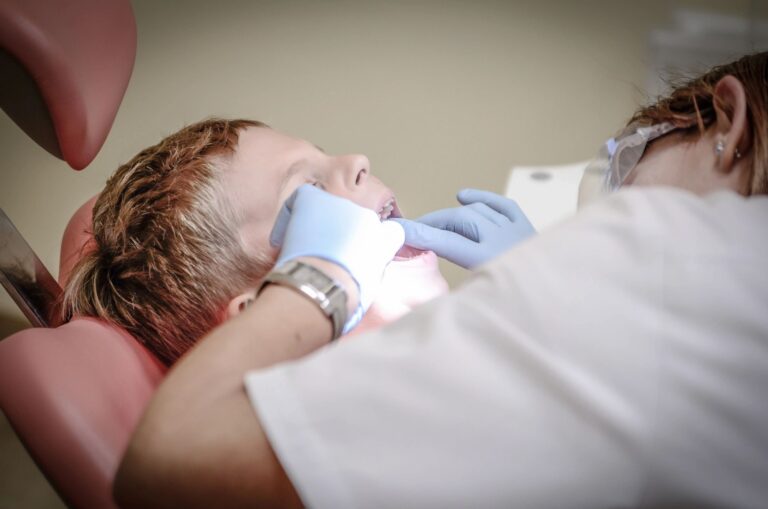Why do kids get silver teeth aka steel crowns?
Silver teeth in children, often referred to as stainless steel crowns, are a common dental treatment used to restore or protect primary (baby) teeth that are severely decayed, damaged, or at risk of being lost prematurely. These crowns are known for their durability, cost-effectiveness, and ease of placement, making them a preferred choice in pediatric dentistry for certain conditions. The following explanation, divided into sections, will provide a comprehensive understanding of why children get silver teeth.
Understanding Primary Teeth and Their Importance
Primary teeth play a crucial role in a child’s oral and overall health. They are essential for proper chewing and nutrition, aid in speech development, and hold space for permanent teeth. When these teeth are lost too early or are significantly damaged, it can lead to a range of problems, including misaligned permanent teeth, difficulties in speech, and nutritional issues.
Causes of Tooth Decay and Damage in Children
Children’s teeth are susceptible to decay for several reasons. High-sugar diets, inadequate oral hygiene, genetic factors, and lack of regular dental checkups contribute to the development of cavities. Additionally, children’s primary teeth have thinner enamel compared to adult teeth, making them more prone to decay.
Treatment Options for Decayed or Damaged Teeth
When a primary tooth is decayed or damaged, the treatment choice depends on the extent of the issue. Options include fillings, pulpotomies (partial root canal treatments for children), and crowns. Stainless steel crowns are often recommended when the decay is extensive, or when a tooth is at risk of further damage.
The Role of Stainless Steel Crowns
Stainless steel crowns are used to entirely cover a damaged or decayed tooth. They protect the remaining tooth structure and ensure the functionality of the tooth until it naturally falls out and is replaced by a permanent tooth. These crowns are especially beneficial in preserving molars, which are critical for maintaining proper spacing in a child’s mouth.
Advantages of Stainless Steel Crowns
Stainless steel crowns have several advantages:
- Durability: They withstand the forces of chewing better than fillings, making them ideal for back teeth.
- Full Coverage Protection: They cover the entire tooth, preventing further decay.
- Cost-Effectiveness: Compared to other crown materials, they are more affordable.
- Procedure Simplicity: Placement of stainless steel crowns is relatively straightforward and can often be completed in one visit.
The Procedure for Placing Stainless Steel Crowns
The procedure for placing a stainless steel crown typically involves the following steps:
- Tooth Preparation: The dentist removes decay and shapes the tooth to fit the crown.
- Crown Selection and Fitting: A pre-made crown is selected and adjusted to fit snugly over the tooth.
- Cementation: The crown is cemented onto the tooth, fully encasing it.
This procedure is usually done under local anesthesia and is well-tolerated by children.
Care and Maintenance of Stainless Steel Crowns
After the placement of a stainless steel crown, normal oral hygiene practices should continue. This includes regular brushing, flossing, and dental checkups. While stainless steel crowns are durable, they still require care to prevent gum disease or other oral health issues.
Psychological and Social Considerations
The appearance of stainless steel crowns can be a concern for some children and parents due to their metallic look. However, these crowns are typically placed on molars, which are not easily visible. Dental professionals often address these concerns by educating parents and children about the function and temporary nature of these crowns.
Alternatives to Stainless Steel Crowns
In some cases, tooth-colored crowns made from materials like composite or zirconia may be used. These options are less noticeable but can be more expensive and less durable than stainless steel. The choice depends on various factors, including the location of the tooth, the extent of decay, and financial considerations.
The Role of Prevention
Preventive measures, including good oral hygiene practices, regular dental checkups, and a balanced diet, can reduce the likelihood of severe tooth decay and the need for stainless steel crowns. Fluoride treatments and dental sealants are also effective in preventing cavities in children.
Conclusion
Stainless steel crowns are a valuable treatment option in pediatric dentistry for protecting and preserving children’s primary teeth that are severely decayed or damaged. They offer a durable, cost-effective, and practical solution for maintaining oral health in young patients. While the appearance of these crowns can be a concern, their benefits in preserving dental health and function are significant. Prevention of tooth decay remains a key focus, with regular dental care and good oral hygiene practices being essential for children’s oral health.
------------From our Sponsors------------









